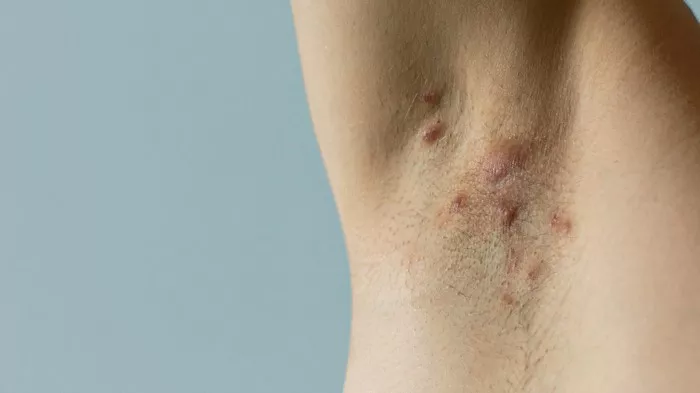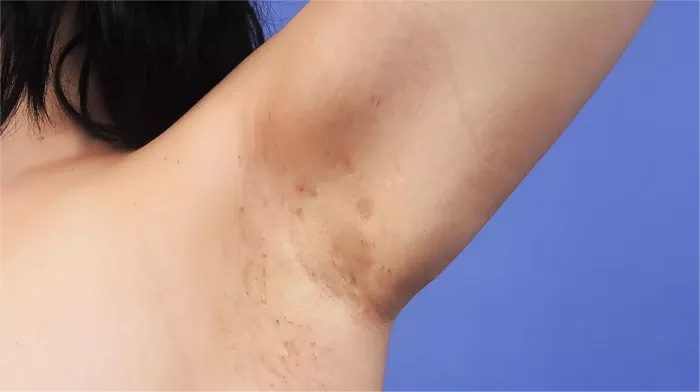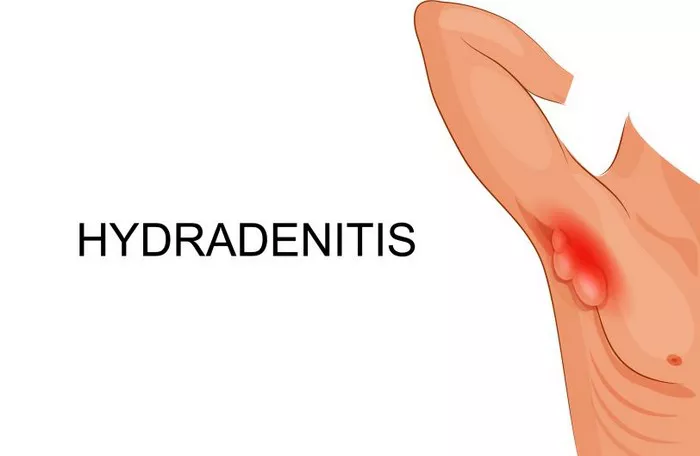Hidradenitis Suppurativa (HS) is a chronic inflammatory skin condition characterized by painful, recurrent nodules, abscesses, and sinus tracts predominantly affecting the intertriginous areas of the body. As the disease progresses, it can advance through stages of severity, with Stage 3 representing a significant escalation in symptoms and impact on patients’ quality of life. This article aims to provide a detailed exploration of HS Stage 3, including its clinical features, diagnostic criteria, management strategies, and the profound effects it has on those living with this challenging condition.
Clinical Features of HS Stage 3
HS is clinically staged based on the Hurley staging system, which classifies the disease into three stages reflecting its severity and extent:
Stage 1 (Mild): Characterized by the presence of single or multiple isolated abscesses without scarring or sinus tracts.
Stage 2 (Moderate): Involves recurrent abscesses with the formation of sinus tracts and scarring in the affected areas.
Stage 3 (Severe): The most advanced stage, featuring widespread involvement with interconnected sinus tracts, abscesses, and significant scarring and fibrosis.
Stage 3 HS presents with a constellation of debilitating symptoms that profoundly impact patients’ physical and psychological well-being. The affected areas, typically the axillae, groin, buttocks, and under the breasts, exhibit extensive involvement, often leading to chronic pain, malodorous discharge, and impaired mobility due to fibrotic scarring and tissue destruction.
Diagnostic Criteria and Differential Diagnosis
Diagnosing HS, particularly at Stage 3, requires a thorough clinical evaluation and consideration of the following diagnostic criteria:
- Characteristic Lesions: Presence of typical nodules, abscesses, sinus tracts, and scars in typical locations.
- Chronicity and Recurrence: History of recurrent, painful lesions lasting longer than six months.
- Exclusion of Mimickers: Differential diagnosis includes other conditions such as folliculitis, furunculosis, and pilonidal disease.
While the diagnosis of HS is primarily clinical, imaging studies such as ultrasound or MRI may be employed to assess disease extent, especially in advanced stages like Stage 3 where deep involvement and sinus tract formation are prominent.
Management Strategies for HS Stage 3
The management of Stage 3 HS poses significant challenges due to the chronicity, complexity, and impact on patients’ lives. Treatment strategies often require a multidisciplinary approach involving dermatologists, surgeons, and sometimes rheumatologists. Key components of management include:
1. Medical Therapy:
- Topical Treatments: Antiseptic washes, topical antibiotics, and anti-inflammatory agents to reduce inflammation and prevent infection.
- Systemic Therapy: Oral antibiotics (e.g., tetracyclines), immunosuppressive agents (e.g., corticosteroids, methotrexate), and biologics (e.g., TNF-alpha inhibitors) to target underlying inflammatory pathways.
2. Surgical Interventions:
- Incision and Drainage: For acute abscesses.
- Wide Excision: Surgical removal of affected tissue in severe cases to alleviate symptoms and improve quality of life.
- Laser Therapy: Excision combined with laser ablation to manage sinus tracts.
3. Lifestyle Modifications:
- Weight Management: Obesity exacerbates HS symptoms; weight loss can be beneficial.
- Smoking Cessation: Smoking is associated with more severe HS; quitting can improve outcomes.
Impact on Quality of Life and Psychosocial Considerations
HS Stage 3 profoundly affects patients’ quality of life due to chronic pain, functional impairment, and psychological distress. The physical manifestations often lead to social isolation, depression, and anxiety. Managing the psychosocial aspects of the disease is as crucial as treating its physical symptoms. Support groups, counseling, and patient education are essential components of comprehensive care for individuals living with Stage 3 HS.
Research and Future Directions
Despite recent advances in understanding HS, particularly at its severe stages, further research is needed to optimize treatment outcomes and develop targeted therapies. Areas of ongoing investigation include:
- Immunopathogenesis: Understanding the underlying immune dysregulation driving the disease.
- Biomarker Identification: Developing reliable biomarkers for disease activity and treatment response.
- Novel Therapeutic Approaches: Investigating targeted biologic agents tailored to the pathophysiology of HS.
Conclusion
In conclusion, HS Stage 3 represents the most severe form of this chronic inflammatory skin disorder, characterized by extensive involvement, debilitating symptoms, and profound impact on patients’ lives. Effective management necessitates a multimodal approach encompassing medical, surgical, and psychosocial interventions. Continued research efforts are essential to improve our understanding of this complex condition and enhance treatment options for those affected by HS Stage 3.
Related Topics:

























